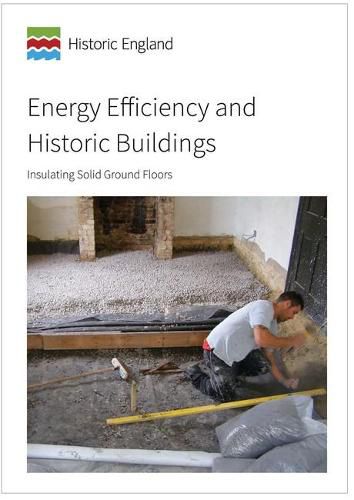Readings Newsletter
Become a Readings Member to make your shopping experience even easier.
Sign in or sign up for free!
You’re not far away from qualifying for FREE standard shipping within Australia
You’ve qualified for FREE standard shipping within Australia
The cart is loading…






This guidance note provides advice on the methods, materials and risks involved with insulating solid ground floors. The energy savings resulting from insulating solid ground floors can in many cases be of marginal benefit when the cost and disruption to the building fabric are considered. Insulating other building elements is likely to produce greater benefits in energy efficiency for significantly less cost. This is partly because a typical solid floor already provides a degree of insulation, but mainly because the ground beneath maintains a stable temperature of around 10 degrees C. However, where an existing floor is being taken up, replaced or repaired, then it can be worth making use of the opportunity to improve its thermal performance.
Solid ground floors can be a significant part of the history and character of an older building, so taking up floors and excavating below to install insulation can be potentially damaging to valuable historic fabric. Even where the floor finish is of no particular historic significance, any alterations to the floor structure beneath need to take account of potential buried historic features and archaeology, which can be of particular significance in churches. If the property is listed all such work will most likely require listed building consent.
Insulating solid ground floors will alter the performance characteristics of the floor structure. There can be a risk of exacerbating any existing moisture-related problems and causing problems in adjacent construction, such as diverting moisture up into the outside walls. Introducing impermeable damp proof membranes and materials into the floor structure which are highly resistant to the passage of moisture, are often not compatible with the traditional construction techniques used in older buildings.
This guidance forms one of a series of thirteen guidance notes covering the thermal upgrading of building elements such as roofs, walls and floors.
$9.00 standard shipping within Australia
FREE standard shipping within Australia for orders over $100.00
Express & International shipping calculated at checkout
This guidance note provides advice on the methods, materials and risks involved with insulating solid ground floors. The energy savings resulting from insulating solid ground floors can in many cases be of marginal benefit when the cost and disruption to the building fabric are considered. Insulating other building elements is likely to produce greater benefits in energy efficiency for significantly less cost. This is partly because a typical solid floor already provides a degree of insulation, but mainly because the ground beneath maintains a stable temperature of around 10 degrees C. However, where an existing floor is being taken up, replaced or repaired, then it can be worth making use of the opportunity to improve its thermal performance.
Solid ground floors can be a significant part of the history and character of an older building, so taking up floors and excavating below to install insulation can be potentially damaging to valuable historic fabric. Even where the floor finish is of no particular historic significance, any alterations to the floor structure beneath need to take account of potential buried historic features and archaeology, which can be of particular significance in churches. If the property is listed all such work will most likely require listed building consent.
Insulating solid ground floors will alter the performance characteristics of the floor structure. There can be a risk of exacerbating any existing moisture-related problems and causing problems in adjacent construction, such as diverting moisture up into the outside walls. Introducing impermeable damp proof membranes and materials into the floor structure which are highly resistant to the passage of moisture, are often not compatible with the traditional construction techniques used in older buildings.
This guidance forms one of a series of thirteen guidance notes covering the thermal upgrading of building elements such as roofs, walls and floors.